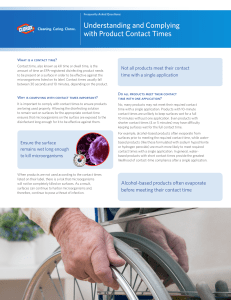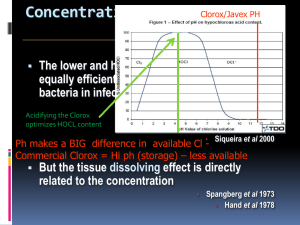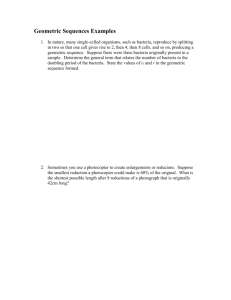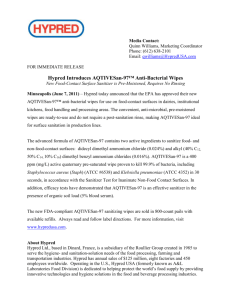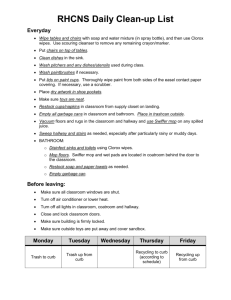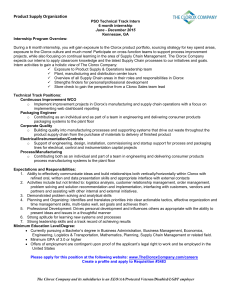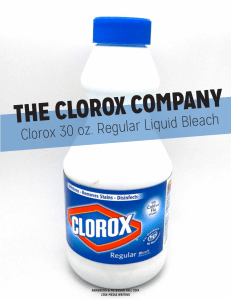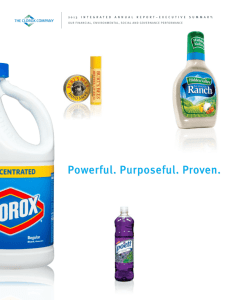Workplace Germ Study Fact Sheet - On
advertisement
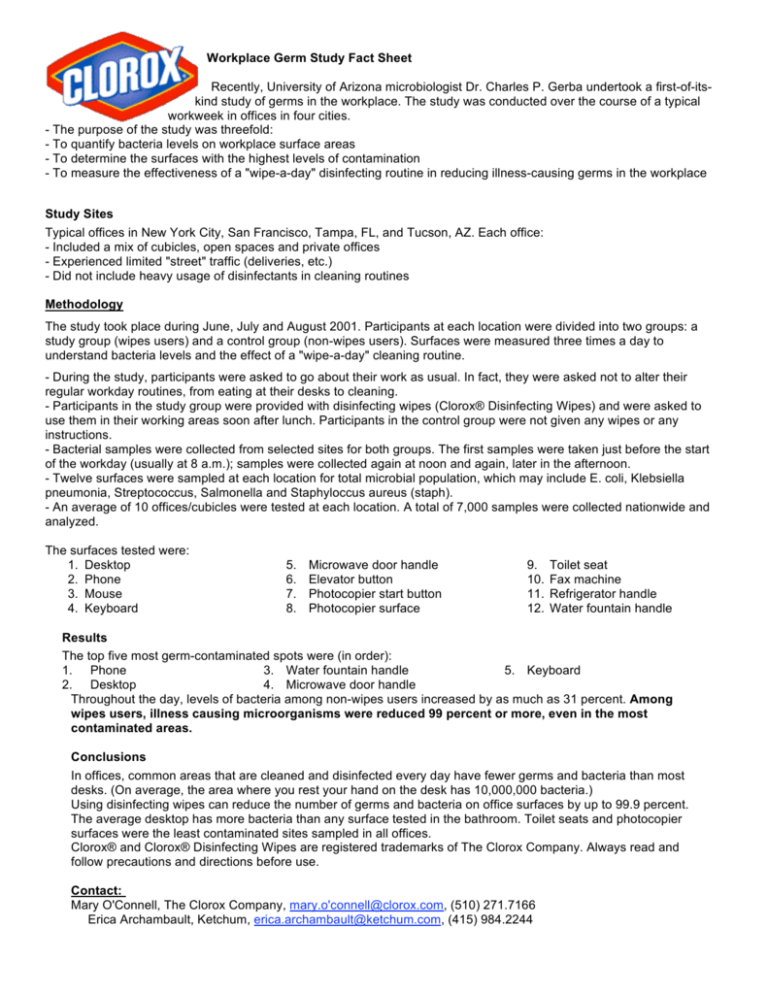
Workplace Germ Study Fact Sheet Recently, University of Arizona microbiologist Dr. Charles P. Gerba undertook a first-of-itskind study of germs in the workplace. The study was conducted over the course of a typical workweek in offices in four cities. - The purpose of the study was threefold: - To quantify bacteria levels on workplace surface areas - To determine the surfaces with the highest levels of contamination - To measure the effectiveness of a "wipe-a-day" disinfecting routine in reducing illness-causing germs in the workplace Study Sites Typical offices in New York City, San Francisco, Tampa, FL, and Tucson, AZ. Each office: - Included a mix of cubicles, open spaces and private offices - Experienced limited "street" traffic (deliveries, etc.) - Did not include heavy usage of disinfectants in cleaning routines Methodology The study took place during June, July and August 2001. Participants at each location were divided into two groups: a study group (wipes users) and a control group (non-wipes users). Surfaces were measured three times a day to understand bacteria levels and the effect of a "wipe-a-day" cleaning routine. - During the study, participants were asked to go about their work as usual. In fact, they were asked not to alter their regular workday routines, from eating at their desks to cleaning. - Participants in the study group were provided with disinfecting wipes (Clorox® Disinfecting Wipes) and were asked to use them in their working areas soon after lunch. Participants in the control group were not given any wipes or any instructions. - Bacterial samples were collected from selected sites for both groups. The first samples were taken just before the start of the workday (usually at 8 a.m.); samples were collected again at noon and again, later in the afternoon. - Twelve surfaces were sampled at each location for total microbial population, which may include E. coli, Klebsiella pneumonia, Streptococcus, Salmonella and Staphyloccus aureus (staph). - An average of 10 offices/cubicles were tested at each location. A total of 7,000 samples were collected nationwide and analyzed. The surfaces tested were: 1. Desktop 2. Phone 3. Mouse 4. Keyboard 5. 6. 7. 8. Microwave door handle Elevator button Photocopier start button Photocopier surface 9. 10. 11. 12. Toilet seat Fax machine Refrigerator handle Water fountain handle Results The top five most germ-contaminated spots were (in order): 1. Phone 3. Water fountain handle 5. Keyboard 2. Desktop 4. Microwave door handle Throughout the day, levels of bacteria among non-wipes users increased by as much as 31 percent. Among wipes users, illness causing microorganisms were reduced 99 percent or more, even in the most contaminated areas. Conclusions In offices, common areas that are cleaned and disinfected every day have fewer germs and bacteria than most desks. (On average, the area where you rest your hand on the desk has 10,000,000 bacteria.) Using disinfecting wipes can reduce the number of germs and bacteria on office surfaces by up to 99.9 percent. The average desktop has more bacteria than any surface tested in the bathroom. Toilet seats and photocopier surfaces were the least contaminated sites sampled in all offices. Clorox® and Clorox® Disinfecting Wipes are registered trademarks of The Clorox Company. Always read and follow precautions and directions before use. Contact: Mary O'Connell, The Clorox Company, mary.o'connell@clorox.com, (510) 271.7166 Erica Archambault, Ketchum, erica.archambault@ketchum.com, (415) 984.2244

